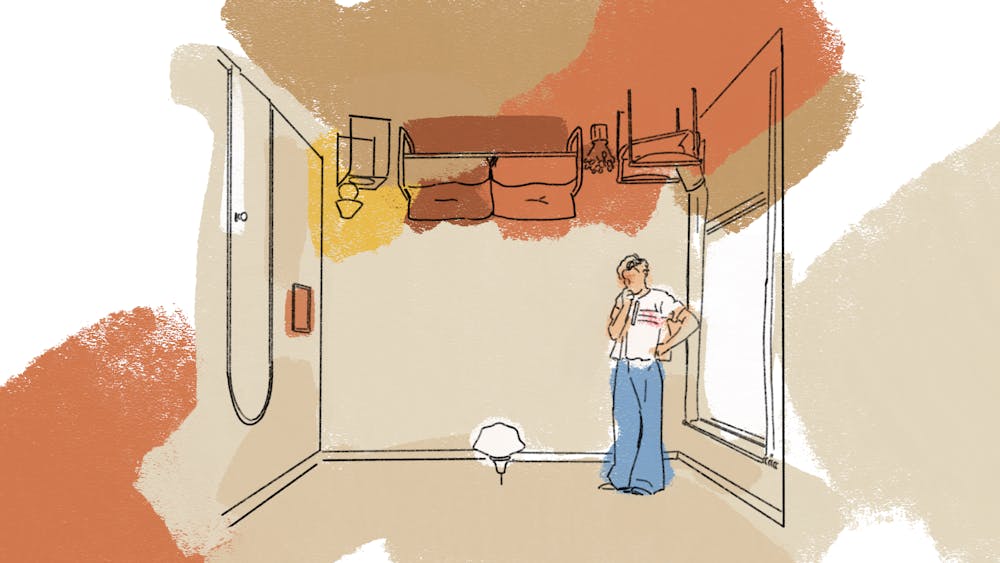United Kingdom–bred One Direction heartthrob–turned–solo–rockstar Harry Styles has entered a new phase of his dynamic music career. On May 20, Styles released his third album Harry’s House. Prior to this release, Styles debuted his self–titled album in 2017 and Fine Line in 2019—Styles’ introduction to rock and '80s–style hits respectively. Inspired by Haruomi Hosono’s '70s record Hosono House, Harry’s House takes another step away from Styles’ rock solo origins to mainstream pop.
The doors of Harry’s House open to “Music For a Sushi Restaurant,” ushered by a familiar tune and Styles’ iconic food imagery. He compares his muse to “sweet ice cream” with “blue bubblegum twisted ‘round [their] tongue.” Listeners quickly realize that Harry’s House is not a record to reflect on, nor a record to solemnly stare out the backseat window listening to. Harry’s House is the radio pop album of the summer.
The first half of the album is where the hits live; Styles explores a '70s theme, using synth, scatting, and other artistic stylings of the iconic music era. “Late Night Talking” and “Grapejuice” reflect on emotionally and physically intimate relationships. Respectively, they capture the obsessive excitement of a relationship and the desire to escape from reality with his lover and a "bottle of rouge" from 1982.
“As It Was,” the record’s one and only single, captures the essence of Harry’s House: reminiscing on change and loss with a sound appropriate to dance to. The song's popularity has remained steady on TikTok since its Mar. 31 release, leaving listeners everywhere addicted to the catchy bridge: “Go home, get ahead, light–speed Internet / I don’t wanna talk about the way that it was.” At this moment, Styles wants to leave his past in the past: his musical upbringing, his conformity to the spotlight, and what his audiences expect from him.
In “Daylight” and “Little Freak,” Styles sings of a magnetic yet unattainable love. A common theme in Harry’s House is a lover being too far away to reach. In “Daylight,” Styles curses the daylight that separates him from his long–distance partner. “Little Freak” is a memory—a partner that he has lost but wonders about. Styles compares his former paramour to a “wet dream just dangling.”
We explore a new room of Harry’s House at the middle point of the album. “Matilda” reminds us that Styles is still capable of producing his 2017 sound. Styles dedicates this ballad to a girl who is neglected and mistreated by her family, drawing inspiration from Roald Dahl’s fictional character Matilda. This song is a moment of solace, stepping out of the discotheque to experience Matilda’s pain. Styles envisions a big, beautiful celebration for Matilda, excluding the family members who have hurt her. “You’re just in time, make your tea and your toast,” he sings to her.
The latter half of Harry’s House is simple—in a good way. “Cinema” and “Daydreaming” are upbeat tracks with a swanky sound and pop hit potential. In “Daydreaming,” Styles compares his relationship to a daydream, a relatable yet cliche metaphor.
“Keep Driving” returns back to Styles’ imagery–ridden writing techniques, transporting his audience alongside his journey of perseverance and growth. In this stream–of–consciousness song, Styles wonders whether it’s worthwhile to “keep driving” despite the darkness he sees. In the bridge, Styles lists off the setbacks that challenge and complicate our humanity: “Wine glass, puff pass / Tea with cyborgs / Riot America / Science and edibles…”
In “Satellite,” Styles speaks to a past lover, hoping to be grounded by this person. He calls out, “Don’t you know that I am right here? / Spinnin’ out, waitin’ for ya to pull me in.” Similar to “Daylight,” Styles holds onto the remains of a lost relationship, wishing for change.
Harry’s House, while deeply personal to Styles, is a record of messages. He feels resentment and a lack of control over his past relationships, phases, and personas. The last two tracks, “Boyfriends” and “Love Of My Life” are two distinct messages to strikingly different audiences. “Boyfriends” expresses Styles’ distaste of men who disrespect women, arguing that he would never do such a thing. Despite the impressive harmonies and good intentions, this track is nothing but a plea for acceptance, separating himself from “the average guy.”
“Love Of My Life” is a message to a less tainted figure in Styles’ life: his hometown of Holmes Chapel. While some may interpret this song as a memory of a lost lover, “Love Of My Life” is dedicated to the world Styles’ music career forced him to leave behind. He latched onto relics of his past “In a hotel, usin’ someone else’s name.” This final message is the purest of them all, as his love for home is innocent and everlasting.
Harry’s House is a record of reflection. While this is not the most complex record of Styles’ solo career, Harry’s House confronts the choice of whether to dwell on the past, accept it, or move forward. This record is the tangible object that jogs a memory, the acknowledgment that a relationship can change a life, and a reminder that it is possible to dance in times of darkness.







